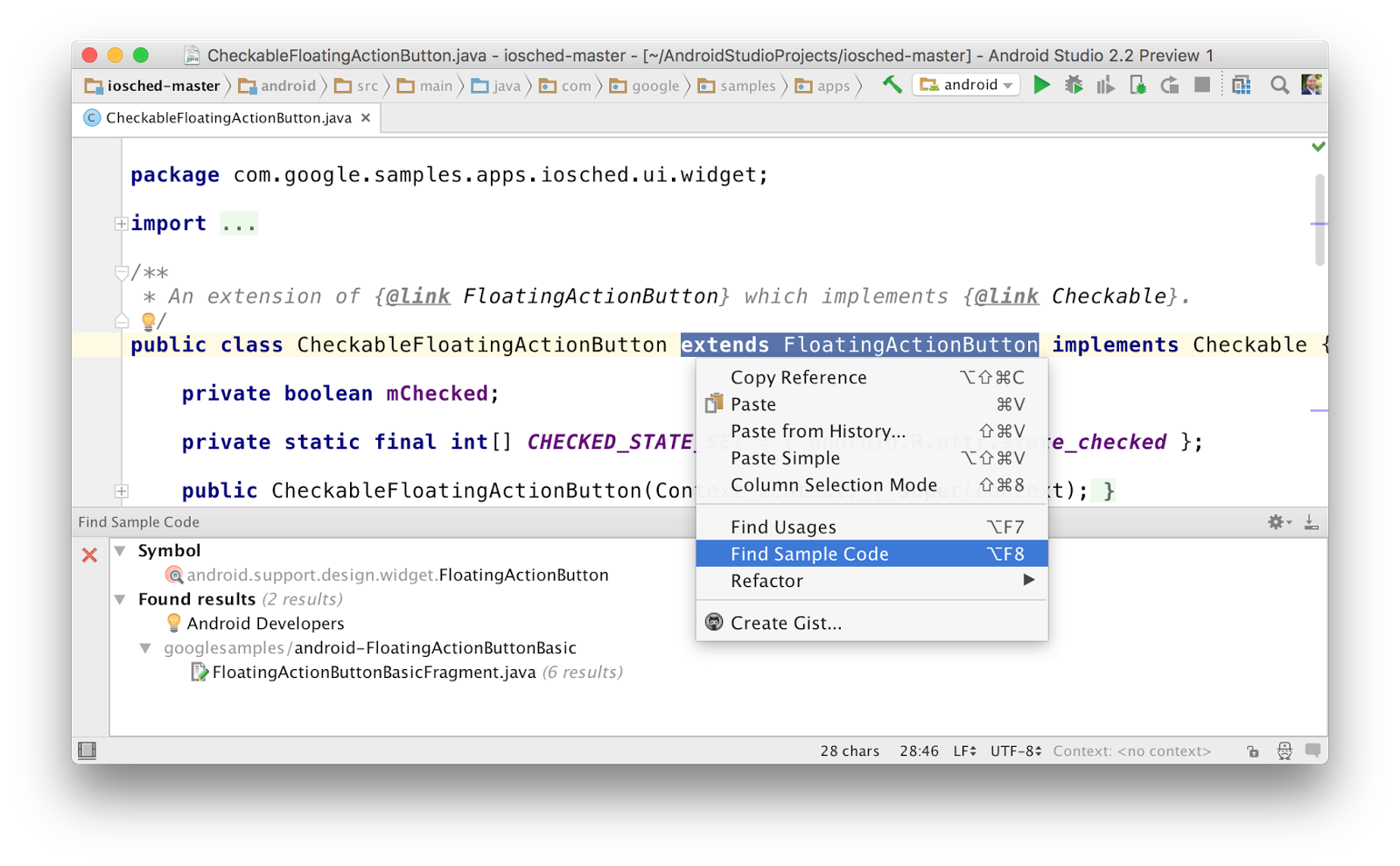Android Studio Sample Code
Jun 5, 2018 - Android Studio provides a selection of code samples and templates for you to use to accelerate your app development. Browse sample code to. 1.6.2 Create the source code of a simple FirstAndroidApplication Activity. In this special example, we are going to set our Android Development Studio IDE,. Oct 4, 2018 - In documentation they tell about Find Code Sample Option / Import samples. But I can not see both of them in my Android Studio 3.2.
I am trying to create a TextView in Android Studio using the code on their reference (I already know I can use XML but I am trying to learn java). My code doesn't work and I can't figure out why. I look just like the code on the reference. I am trying to figure out how to use the Android reference guide to code in Android Studio. Any tips and tricks for using the reference guide are appreciated too.
Note: Please no comments saying I need to buy a java book, take a java class, etc because I am already doing that.
The reference I am referring to (http://developer.android.com/reference/android/widget/TextView.html#)
3 Answers
if I understand correctly what you're trying to accomplish, is with java code create a TextView in an Android App. If so, you are aproaching it the wrong way. Let me explain:
What you are doing; You are creating an Activity that extends (inherits in Object Oriented Programming lexicon) TextView, and then use TextView methods to change the appearance of the widget. What this means is that you are making the whole app a single TextView Widget and then overloading its methods with your intended changes which is not the way the platform was designed.
What I think you should do; use the Android Studio wizard that creates a blank activity (as shown in http://developer.android.com/training/basics/firstapp/creating-project.html ). Remove the 'Hello World!' TextView from activity_main.xml. In MainActivity.java. you can create the TextView and fill it out inside the onCreate method with code like this:
Hope that it helps and sets you in the right direction.
They way that you are doing it is unnecessary. These methods are already built into the TextView object. You don't need to rebuild them. This is doubling your work. Just instantiate a TextView object and then call those methods.
You just handle the textview in java you declare them and use java to set the text and you put textview in your layout to show them to user
For example see :
You have a layout file such as main.xml In that you add TextView
And in java you do this
And set text using
Edit as promised
You can have a clicklistener on TextViewExample :
And there are also some XML attributes to help in formating
For it consider the following:
Android Studio Sample
You can also set this attributes dynamically also using java
Vb Sample Code Visual Basic
Like this :
And other
Not the answer you're looking for? Browse other questions tagged javaandroidandroid-studio or ask your own question.
There is sample code on the developer site that i wish to run. Assistir series online.
When I import as a new Android Studio project, I'm not given any ability to run the code (disabled buttons).
I attempted to copy the source files over into the shell of a new project, but i than got errors that didn't make sense. reference to duplicate declarations in source files that had nothing relating inside them.
Is there an idiots guide on how to properly use android studio, or is it just this difficult?
2 Answers
In order to correctly import the project, you should follow the Samples guide as found in the developer docs.

To import a downloaded project:
Unpack the downloaded project package.
In Android Studio, chose File > Import Project and select the root folder of the unpacked project.
Android Studio may ask you to choose the type of project you are importing.
If this is the case, make sure to choose Import project from external model and select the Gradle option.
Alternatively, if the Gradle option does not work, I would attempt to use the Eclipse option.
Open .gradle file when you import the project, not the folder of the proyect.